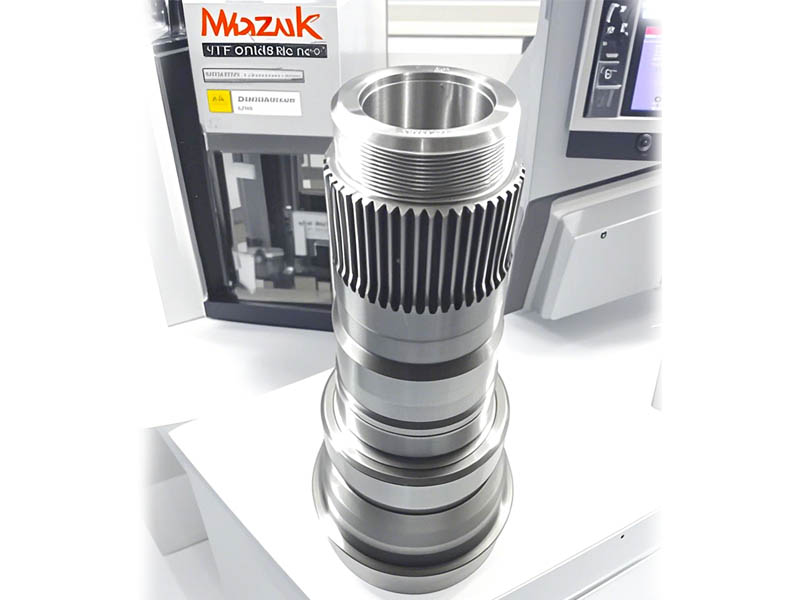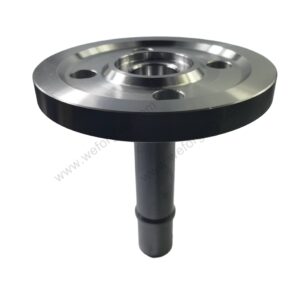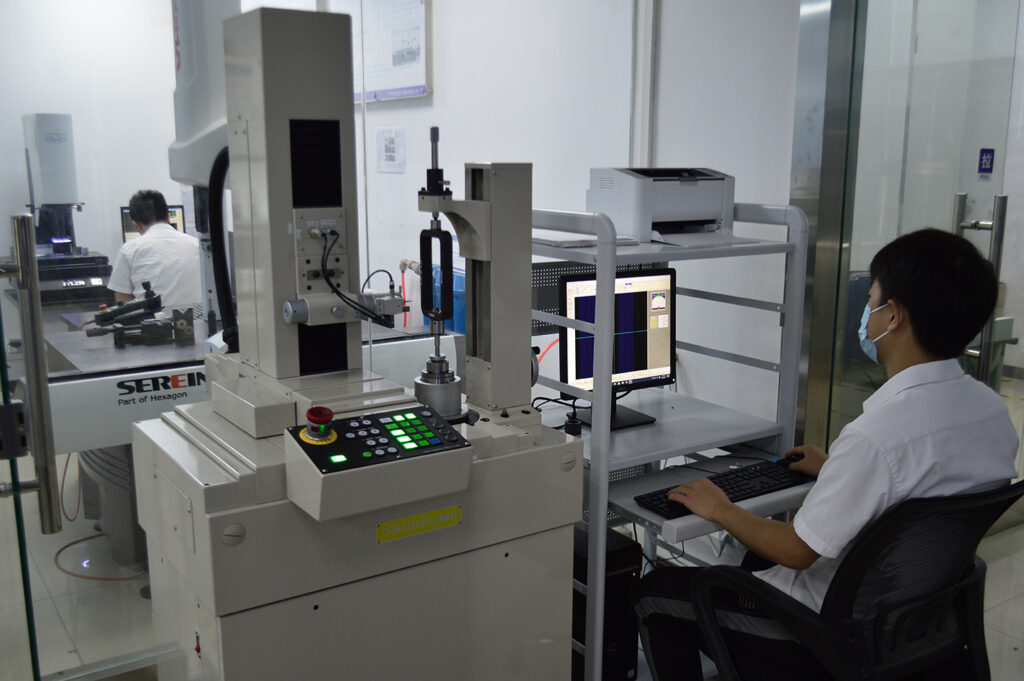Lavorazione degli ingranaggi
Capacità di lavorazione degli ingranaggi – Weforging
Noi di Weforging Manufacturing siamo specializzati nella lavorazione di ingranaggi personalizzati per applicazioni industriali. Le nostre capacità spaziano dallo s tampaggio a caldo e ad anello di ingranaggi grezzi alla lavorazione CNC di precisione, alla dentatura, alla sagomatura, alla rettifica e ai trattamenti superficiali. Forniamo agli OEM di tutta Europa e del Nord America soluzioni complete per ingranaggi, personalizzate in base a standard precisi.

Che cos'è la lavorazione degli ingranaggi?
La lavorazione degli ingranaggi è un processo di produzione completo che trasforma i pezzi grezzi forgiati o fusi in ingranaggi finiti con profili dei denti precisi e tolleranze dimensionali ristrette. Il flusso di lavoro comprende tipicamente tornitura, dentatura, sagomatura, brocciatura, rettifica e trattamento termico. Ogni fase migliora la resistenza degli ingranaggi, la finitura superficiale e le prestazioni complessive, garantendo un funzionamento affidabile nelle trasmissioni, nei sistemi di trasmissione e nei macchinari pesanti.
Tipi di ingranaggi che produciamo
Ingranaggi solari di precisione – Per sistemi di ingranaggi planetari, garantiscono un trasferimento accurato della coppia e una lunga durata.
Alberi di trasmissione – Prodotti secondo gli standard certificati ISO per una trasmissione di potenza affidabile.
Ingranaggi pignone – Forgiati su misura e lavorati con macchine CNC per un innesto fluido e una lunga durata.
Corone interne – Rettificate con macchine CNC e predisposte per trasmissioni planetarie, garantiscono resistenza e precisione.
Ingranaggi dell’albero di ingresso – Realizzati in lega di acciaio 8620, classificati AGMA 10 per applicazioni gravose.
Ingranaggi flangiati – Acciaio forgiato lavorato con macchine CNC, progettato per prestazioni con coppia elevata.
Ingranaggi assali – Forgiati e lavorati con precisione per soddisfare i requisiti di trasmissione di potenza più esigenti.
Forgiatura di ingranaggi grezzi (Hot & Ring Forging)
Produciamo sbozzi per ingranaggi ad alta resistenza:
- Fucinatura a caldo di ingranaggi grezzi con struttura dei grani migliorata e resistenza alla fatica
- Forgiatura ad anello per ingranaggi di grande diametro, per migliorare la concentricità e l’efficienza dei costi
- Prelavorazione di pezzi grezzi forgiati per consentire una minima asportazione di materiale
Materiali: Acciaio legato (42CrMo, 20CrMnTi, 18CrNiMo7-6), acciaio inossidabile, acciaio per utensili

Processi di lavorazione degli ingranaggi
I nostri servizi di lavorazione degli ingranaggi CNC includono:
- Tornitura e fresatura CNC di ingranaggi grezzi forgiati
- Dentatura e sagomatura di ingranaggi per moduli da 1 a 12
- Taglio di scanalature, brocciatura e rettifica dei denti
- Finitura superficiale: cementazione, nitrurazione, tempra a induzione
Tutti gli ingranaggi sono lavorati secondo gli standard AGMA , DIN o ISO 1328 , con un controllo preciso dell’errore di rotazione, della forma del dente e della deviazione del passo.
Panoramica delle attrezzature
Il nostro impianto di produzione di ingranaggi comprende:
- Dentatrici a controllo numerico (YKD315, YKD500)
- Macchine dentatrici e rettificatrici di profili
- Torni CNC verticali e orizzontali
- Centri di misura del dente e CMM
- Forni per il trattamento termico e laboratorio QC
Gestiamo lotti da 1 a 10.000 unità, con tracciabilità e ispezione per ogni pezzo.

Applicazioni e settori
Scatole del cambio per macchine edili
Gli ingranaggi forgiati nelle scatole del cambio per impieghi gravosi sopportano carichi estremi e garantiscono una lunga durata nei cantieri edili.Ingranaggi di trasmissione per autocarri e macchine agricole
Gli ingranaggi lavorati con precisione garantiscono un trasferimento efficiente della potenza e prestazioni affidabili nelle macchine mobili.Corone dentate per turbine eoliche
Le grandi corone dentate forgiate garantiscono stabilità e resistenza alla coppia per un funzionamento continuo nei sistemi di energia rinnovabile.Ingranaggi di precisione per attuatori e azionamenti valvole
Gli ingranaggi ad alta precisione garantiscono un controllo fluido e prestazioni ottimali nelle apparecchiature di automazione e controllo industriale.Ingranaggi per motori idraulici e componenti per pompe
Gli ingranaggi resistenti all’usura migliorano l’efficienza e l’affidabilità nei sistemi idraulici e nelle applicazioni di potenza fluida.
Perché scegliere Weforging per la lavorazione degli ingranaggi?
- Produttore di ingranaggi personalizzati con capacità di forgiatura e finitura completa
- Lavorazione CNC di ingranaggi grezzi forgiati a caldo e ad anello
- MOQ ridotto e prototipazione rapida con utensili interni
- Certificazione ISO 9001 & CE
- Esperienza di esportazione in oltre 20 paesi
Il nostro team di ingegneri supporta il DFM, la revisione delle tolleranze e l’integrazione dei disegni 2D/3D. Tutti i prodotti sono sottoposti a ispezione al 100%.

